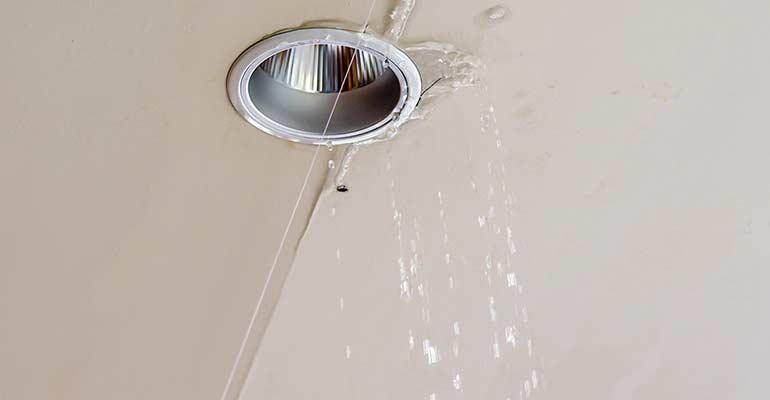Just how do you feel when it comes to How Fast Water Damage Can Ruin Your Home?

Leaks not only trigger waste of water yet can additionally trigger unneeded damage to your house and promote unwanted organic development. Sadly, water leaks may go unnoticed considering that the majority of the pipework in our house is concealed. By looking and also recognizing for day-to-day scenarios that create leakages, you can shield your home from future leakages and unnecessary damage. Today, we will look at 6 leak creates that might be triggering your pipelines to leak.
Immediate temperature level adjustments.
Severe temperature level modifications in our pipes can trigger them to expand and also contract unexpectedly. This growth and also tightening may cause fractures in the pipes, specifically if the temperature are below freezing. If you kept an eye on just how your plumbing functions, it would be best. The existence of the previously pointed out scenarios often shows a high danger.
Rusty water systems
As time goes by, your plumbing system ages and also corrosion such as rust may start gnawing the pipelines. This might be the root cause of staining or bending on your water pipes. This asks for an evaluation with your plumber immediately. Take into consideration replacing the pipes considering that they are at a greater risk of rust than the more recent versions if our plumbing system is old.
Defective Pipeline Joints
The point at which your pipelines attach is frequently the weakest link in the waterline. Pipeline joints can weaken gradually, leading to water leakages. Sadly, the majority of pipeline joints are not quickly noticeable. If you have loud pipes that make ticking or banging noises, specifically when the hot water is turned on, your pipe joints are possibly under a lot of stress. It is a good idea to have your plumber evaluate your system once a year.
Trespassing origins
Many water leakages begin outside your house rather than inside it. If you discover an unexpected reduction in water pressure, say in your faucet, require time to head out and also analyze your lawn. You may see damp patches or sinkholes in your backyard, which may suggest that tree roots are invading water lines causing water to permeate out. You can have your plumber check for breach, particularly if you have trees or hedges near your property.
Poor Water Connectors
Sometimes, a leakage can be brought on by loosened hose pipes and pipes that provide your devices. Usually, moving is what triggers the loose water Links. You might locate in the case of a cleaning maker, a hose pipe might spring a leak as a result of shaking throughout the spin cycle. In case of a water connections leakage, you may see water running directly from the supply line or pools around your home appliances.
Obstructed Drains
Blocked drains pipes may be irritating as well as inconveniencing, but they can often wind up causing an overflow causing burst pipes. Maintain removing any type of materials that might go down your drains that might obstruct them to avoid such troubles.
All the above are causes of leaks yet not all water leaks result from plumbing leakages; some leakages might come from roofing leaks. All leaks must be fixed immediately to prevent water damages.
Leakages not just cause waste of water however can likewise create unneeded damage to your home and promote undesirable natural growth. By looking as well as recognizing for day-to-day situations that cause leakages, you can secure your residence from future leakages and also unneeded damages. Today, we will look at 6 leak creates that may be causing your pipes to drip.
At times, a leak can be caused by loose tubes as well as pipes that provide your appliances. In situation of a water links leak, you may see water running directly from the supply line or pools around your appliances.
How To Check For Water Leak In Your Home
How To Check for Leaks
The average household's leaks can account for nearly 10,000 gallons of water wasted every year and ten percent of homes have leaks that waste 90 gallons or more per day. Common types of leaks found in the home are worn toilet flappers, dripping faucets, and other leaking valves. These types of leaks are often easy to fix, requiring only a few tools and hardware that can pay for themselves in water savings. Fixing easily corrected household water leaks can save homeowners about 10 percent on their water bills.
To check for leaks in your home, you first need to determine whether you're wasting water and then identify the source of the leak. Here are some tips for finding leaks:
Take a look at your water usage during a colder month, such as January or February. If a family of four exceeds 12,000 gallons per month, there are serious leaks.
Check your water meter before and after a two-hour period when no water is being used. If the meter changes at all, you probably have a leak.
Identify toilet leaks by placing a drop of food coloring in the toilet tank. If any color shows up in the bowl after 10 minutes, you have a leak. (Be sure to flush immediately after the experiment to avoid staining the tank.)
Examine faucet gaskets and pipe fittings for any water on the outside of the pipe to check for surface leaks.
Undetected water leaks can happen without the home or business owner even realizing. If you suspect a water leak, but not able to find the source. It is time to contact a professional water leak detection service, The Leak Doctor.
How To Find a Water Leak In Your Home
https://www.leakdoctor.com/blog/How-To-Check-For-Water-Leak-In-Your-Home_AE197.html

As an enthusiastic reader on Common Water Leaks In House, I thought sharing that short article was mandatory. Do you know somebody who is intrigued by Most Common Causes of Leaky Pipes? Feel free to promote it. Kudos for your time. Please check up our blog back soon.
Contact Us